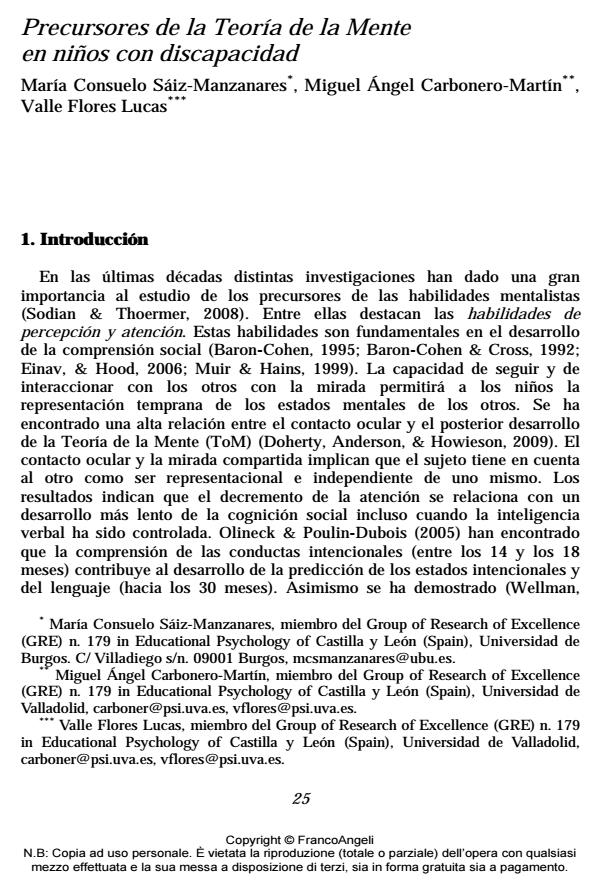Precursores de la Teoría de la Mente en niños con discapacidad
Titolo Rivista CADMO
Autori/Curatori María Consuelo Sáiz-Manzanares, Miguel Ángel Carbonero-Martín, Lucas Valle Flores
Anno di pubblicazione 2014 Fascicolo 2014/1
Lingua Spagnolo Numero pagine 12 P. 25-37 Dimensione file 82 KB
DOI 10.3280/CAD2014-001004
Il DOI è il codice a barre della proprietà intellettuale: per saperne di più
clicca qui
Qui sotto puoi vedere in anteprima la prima pagina di questo articolo.
Se questo articolo ti interessa, lo puoi acquistare (e scaricare in formato pdf) seguendo le facili indicazioni per acquistare il download credit. Acquista Download Credits per scaricare questo Articolo in formato PDF

FrancoAngeli è membro della Publishers International Linking Association, Inc (PILA)associazione indipendente e non profit per facilitare (attraverso i servizi tecnologici implementati da CrossRef.org) l’accesso degli studiosi ai contenuti digitali nelle pubblicazioni professionali e scientifiche
Recent studies looking into the development of mental precursors link the acquisition of the Theory of Mind to the previous appearance of symbolic play. When performing symbolic play tasks, the development of causal reasoning skills represents a differential factor, which is essential to the subsequent acquisition of the Theory of Mind. A total of 45 children (24 boys and 21 girls), aged between 24 and 39 months (with a DQ of 58-69), diagnosed with different conditions (delayed cognitive development, delayed language development and/or Pervasive Developmental Disorder). The aim of the study is to analyse the relation between mental precursors and different disabilities. The results show that the most widely affected mental prerequisite was found to be the development of Symbolic Play, which is directly related to the development of causal reasoning. No significant differences based on the type of condition were detected. The evidence has shown that the development of mental precursors is not a uniform process. It would therefore be recommendable to offer specific training in the development of mental precursors related to the development of causal reasoning.
Parole chiave:Mental precursors, pre-verbal communication, Symbolic Play, socio-cognitive skills, training in premental skills.
- Analysis of functional development in children 0-6 years: a pilot study using a web application, eEarlyCare, and data mining techniques (Preprint) Maria Consuelo Sáiz-Manzanares, Raúl Marticorena Sánchez, Álvar Arnaiz-González, in JMIR Formative Research /2020
DOI: 10.2196/25936
María Consuelo Sáiz-Manzanares, Miguel Ángel Carbonero-Martín, Lucas Valle Flores, Precursores de la Teoría de la Mente en niños con discapacidad in "CADMO" 1/2014, pp 25-37, DOI: 10.3280/CAD2014-001004